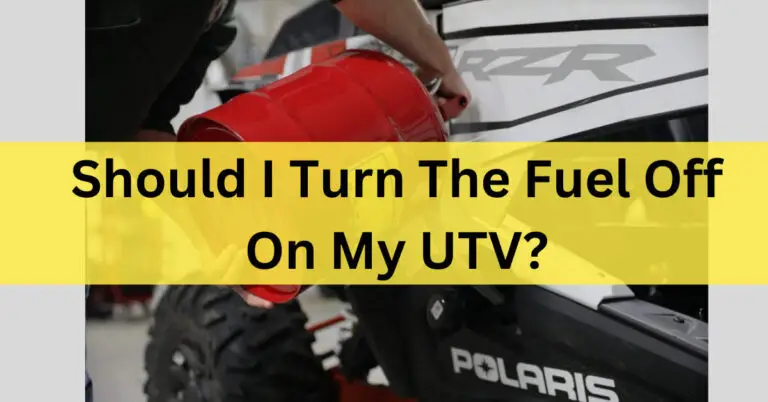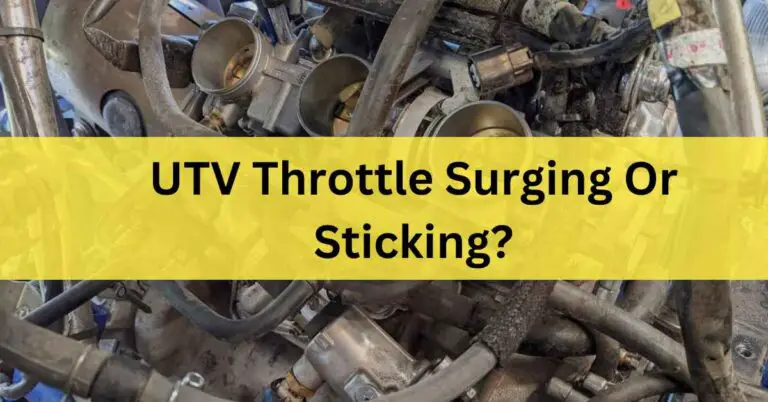UTV vapor lock issues – Causes, Symptoms & Fixing In 2023
UTVs are also prone to issues such as vapor lock like any other vehicle. Vapor lock is a common problem when the fuel in the UTV’s fuel system gets too hot, causing it to evaporate and create an air pocket that prevents the fuel from reaching the engine.
To resolve UTV vapor lock issues, you can check and properly route the fuel lines, insulate the fuel lines with heat-resistant material, add a fuel cooler or heat shield, and use high-quality fuel with a lower volatility rating.
Regular maintenance and cleaning of the carburetor can also help prevent vapor lock.
This article will discuss the causes and symptoms of UTV vapor lock issues and how to prevent and fix them.
Causes of UTV Vapor Lock Issues:
1. High Ambient Temperature:
High ambient temperature is one of the most common causes of vapor lock in UTVs.
When the temperature outside is too high, the fuel in the fuel lines and carburetor can boil and turn into vapor.

It can lead to the formation of air pockets, which can prevent fuel from flowing to the engine.
2. Poor Ventilation:
Poor ventilation in the engine compartment can also cause vapor lock in UTVs.
When the engine compartment is not well-ventilated, the heat generated by the engine can build up and cause the fuel to boil.
It can lead to the formation of air pockets, which can prevent fuel from flowing to the engine.
3. Low Fuel Level:
When the fuel level in the tank is low, it can cause a vapor lock in UTVs. When the fuel level is low, the pump must work harder to draw fuel from the tank.
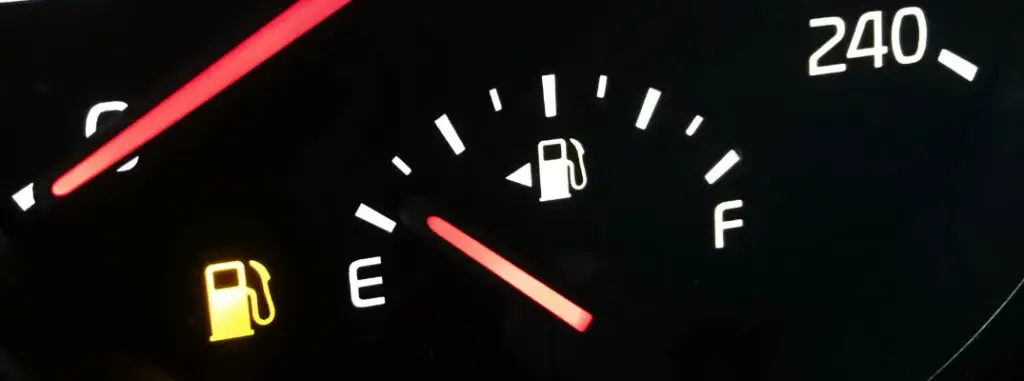
It can cause the fuel to heat up and turn into vapor, leading to air pockets forming in the fuel lines and carburetor.
4. Clogged Fuel Filter:
A clogged fuel filter can also cause vapor lock in UTVs. When the fuel filter is clogged, it can restrict fuel flow to the engine.
It can cause the fuel to heat up and turn into vapor, leading to air pockets forming in the fuel lines and carburetor.
5. Hot Exhaust System:
The exhaust system in UTVs can get extremely hot, particularly when the engine is under heavy load.

When the exhaust system is too hot, it can cause the fuel in the fuel lines and carburetor to boil and turn into vapor.
It can lead to the formation of air pockets, which can prevent fuel from flowing to the engine.
6. High Altitude:
High altitude can also cause vapor lock in UTVs. When UTVs are operated at high altitudes, the air pressure decreases, which can cause the fuel to boil at a lower temperature.
It can lead to the formation of air pockets, which can prevent fuel from flowing to the engine.
7. Poor Fuel Quality:
Poor fuel quality can also cause vapor lock in UTVs. When the fuel contains impurities or additives incompatible with the UTV’s engine, it can cause the fuel to boil and turn into vapor.
It can lead to the formation of air pockets, which can prevent fuel from flowing to the engine.
8. Engine Overheating:
When the UTV’s engine overheats, it can cause the fuel in the fuel lines and carburetor to boil and turn into vapor.
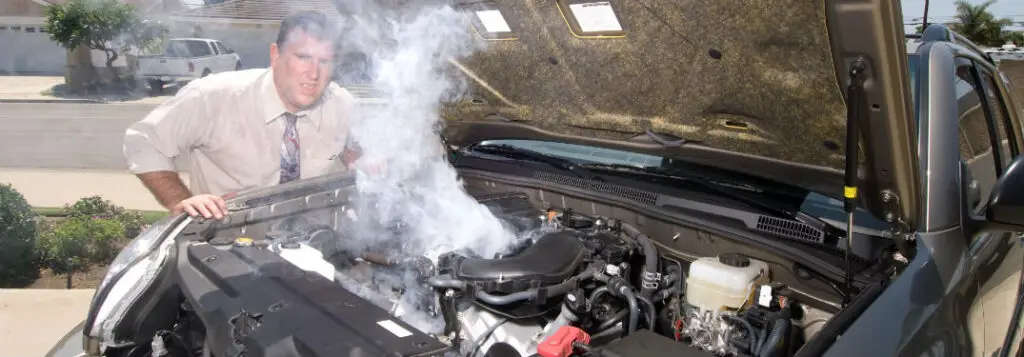
It can lead to the formation of air pockets, which can prevent fuel from flowing to the engine. Engine overheating can be caused by various factors, including a malfunctioning cooling system or a lack of oil.
9. Fuel Line Routing:
The routing of the fuel lines in the UTV can also contribute to vapor lock issues.
When the fuel lines are routed in a way that exposes them to high temperatures, such as near the engine or exhaust system, it can cause the fuel to boil and turn into vapor.
It can lead to the formation of air pockets, which can prevent fuel from flowing to the engine.
10. Fuel Pump Issues:
A malfunctioning fuel pump can also cause vapor lock in UTVs. When the fuel pump is not functioning properly, it may not be able to draw enough fuel from the tank, which can cause the fuel to heat up and turn into vapor.
It can lead to the formation of air pockets, which can prevent fuel from flowing to the engine.
Symptoms of UTV Vapor Lock Issues:
1. Engine Stalling:
One of the most common symptoms of UTV vapor lock is engine stalling. When the fuel in the fuel lines or carburetor turns into vapor, it can create air pockets that prevent fuel from flowing into the engine.
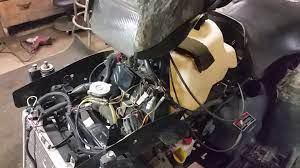
It can cause the engine to stall, particularly when the UTV is under heavy load or when the engine is operating at high temperatures.
2. Reduced Power:
UTV vapor lock can also cause reduced power output. When the engine is not receiving enough fuel, it may not be able to produce the power required to operate the UTV efficiently.
It can cause the UTV to run slower, struggle to climb hills or navigate rough terrain.
3. Rough Idling:
When the UTV is experiencing vapor lock, it may also exhibit rough idling. The air pockets in the fuel lines or carburetor can cause the engine to run unevenly, resulting in a rough idle.
The engine may also stall when idling, particularly when the UTV is not moving.
4. Hard Starting:
UTV vapor lock can also cause hard starting. When the engine is not receiving enough fuel, it may be difficult to start the UTV, particularly when it is hot.

It is because the fuel lines and carburetor may be filled with air pockets, which can prevent fuel from flowing into the engine.
5. Engine Misfire:
When the UTV is experiencing vapor lock, it may also exhibit engine misfire. The air pockets in the fuel lines or carburetor can cause the engine to receive an inconsistent fuel supply, resulting in a misfire.
It can cause the engine to run unevenly and produce a jerky or choppy sound.
6. Overheating:
UTV vapor lock can also cause the engine to overheat. The air pockets in the fuel lines or carburetor can cause the engine to run lean, meaning there is insufficient fuel in the air-fuel mixture.
When the engine is running lean, it can cause the engine to overheat, which can lead to engine damage if not addressed promptly.
7. Fuel Smell:
When the UTV is experiencing vapor lock, it may also produce a fuel smell. It is because the fuel in the fuel lines or carburetor may be evaporating and turning into vapor, which can create a strong fuel smell in the engine compartment or exhaust system.
8. Poor Fuel Economy:
UTV vapor lock can also cause poor fuel economy. When the engine is not receiving enough fuel, it may not be able to operate efficiently, which can result in increased fuel consumption.
It can cause the UTV to consume more fuel than usual, which can be costly in the long run.
9. Engine Damage:
If the UTV vapor lock is not addressed promptly, it can damage the engine. When the engine is not receiving enough fuel, it can cause the engine to run lean, which can lead to overheating and damage to engine components.
The engine may warp or crack due to overheating, which can be expensive to repair or replace.
Preventing UTV Vapor Lock Issues:
1. Proper Ventilation:
One efficient way to prevent UTV vapor lock is to ensure proper ventilation in the engine compartment.
It can be achieved by adding additional vents to the engine compartment or by ensuring that existing vents are clear and unobstructed.
Proper ventilation helps to prevent heat buildup in the engine compartment, reducing the risk of fuel boiling or evaporating in the fuel lines or carburetor.
2. Fuel Additives:
Fuel additives, such as fuel stabilizers, can also help prevent UTV vapor lock. These additives stabilize the fuel and prevent it from breaking down or evaporating.
Fuel stabilizers can also help prevent the buildup of deposits in the fuel system, which can contribute to vapor lock issues.
3. Fuel Line Insulation:
Insulating the fuel lines in the UTV can also help prevent vapor lock issues. Insulating the fuel lines helps keep the fuel cooler, reducing the risk of fuel boiling or evaporating.
It is particularly important in UTVs that operate in hot climates or under heavy loads.
4. Fuel Filter Maintenance:
Maintaining the UTV’s fuel filter is another important step in preventing vapor lock issues.
Vapor lock is more likely to occur when a dirty or clogged fuel filter restricts the fuel flow to the engine. Changing the gasoline filter regularly can help avoid this problem.
5. Avoid Prolonged Idling:
Prolonged idling can contribute to vapor lock issues, particularly in UTVs that operate in hot climates.
Avoiding prolonged idling and shutting off the engine when not in use can help prevent heat buildup in the engine compartment, reducing the risk of fuel boiling or evaporating in the fuel lines or carburetor.
6. Use High-Quality Fuel:
Using high-quality fuel can also help prevent vapor lock issues in UTVs. Lower-quality fuels may contain higher levels of ethanol, which can contribute to vapor lock issues.
Using a higher octane fuel with lower levels of ethanol can help reduce the risk of vapor lock.
7. Maintain Proper Engine Temperature:
Maintaining proper engine temperature is important in preventing vapor lock issues. UTVs that operate in hot climates or under heavy loads may require additional cooling measures, such as a larger radiator or an engine fan.
Ensuring that the UTV’s cooling system is functioning properly can help prevent heat buildup in the engine compartment, reducing the risk of fuel boiling or evaporating in the fuel lines or carburetor.
8. Regular Maintenance:
Regular UTV fuel system maintenance is essential in preventing vapor lock issues. It includes regular fuel lines, fuel filters, carburetor inspections, regular tune-ups, and oil changes.
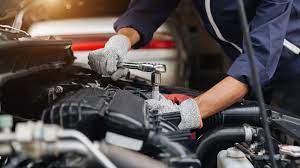
Regular maintenance helps ensure that the fuel system is functioning properly and can help prevent issues contributing to vapor lock.
Fixing UTV Vapor Lock Issues:
1. Identify the Cause of the Vapor Lock:
The first step in fixing the UTV vapor lock is to identify the cause of the issue. Common causes of vapor lock include high temperatures, low fuel pressure, a clogged fuel filter, and a malfunctioning carburetor.
Once the cause of the vapor lock has been identified, the appropriate steps can be taken to fix the issue.
2. Cool the Fuel System:
One efficient way to fix a UTV vapor lock is to cool the fuel system. It can be achieved by installing a fuel cooler or wrapping the fuel lines in insulation.
Cooling the fuel system helps to prevent fuel from boiling or evaporating in the fuel lines or carburetor, reducing the risk of vapor lock.
3. Increase Fuel Pressure:
Low fuel pressure can contribute to vapor lock issues. Increasing the fuel pressure can help prevent vapor lock by ensuring fuel flows through the fuel lines faster, reducing the risk of fuel boiling or evaporating in the lines.
A qualified mechanic or UTV technician can adjust the fuel pressure to the appropriate level.
4. Replace the Fuel Filter:
A clogged or dirty fuel filter can contribute to vapor lock issues by restricting fuel flow to the engine.
Regularly replacing the fuel filter can help prevent vapor lock by ensuring fuel flows freely through the fuel lines.
5. Inspect the Carburetor:
A malfunctioning carburetor can also contribute to vapor lock issues. Inspecting the carburetor for damage or wear and replacing damaged or worn parts can help prevent vapor lock.
Additionally, adjusting the carburetor to the appropriate settings can help ensure fuel flows properly through the engine.
6. Use Fuel Additives:
Fuel additives, such as fuel stabilizers or octane boosters, can also help prevent vapor lock issues. Fuel stabilizers help to stabilize the fuel and prevent it from breaking down or evaporating.
Octane boosters can help increase the fuel’s octane rating, reducing the risk of vapor lock.
7. Ventilate the Engine Compartment:
Proper ventilation of the engine compartment is important in preventing vapor lock issues.
Installing additional vents or ensuring that existing vents are clear and unobstructed can help prevent heat buildup in the engine compartment, reducing the risk of fuel boiling or evaporating in the fuel lines or carburetor.
8. Inspect the Fuel Lines:
Inspecting the fuel lines for damage or wear can also help prevent vapor lock issues. Damaged or worn fuel lines can leak fuel, reducing fuel pressure and increasing the risk of vapor lock.
Additionally, replacing rubber fuel lines with metal lines can help prevent heat buildup in the lines, reducing the risk of vapor lock.
Frequently Asked Questions:
1. How do I know if my UTV is experiencing vapor lock?
If your UTV stalls or won’t start in hot weather conditions, it may be experiencing a vapor lock. Other symptoms include rough idling, loss of power, and difficulty starting.
2. Can I drive my UTV with a vapor lock?
Driving your UTV with a vapor lock is not recommended, as it can cause serious engine damage and put you at risk of an accident.
3. Does the warranty cover UTV vapor lock?
The coverage of UTV vapor lock under warranty depends on the specific warranty terms and conditions of the UTV manufacturer.
4. Can adding a fuel cooler help prevent UTV vapor lock?
Yes, adding a fuel cooler to the UTV’s fuel system can help reduce the temperature of the fuel and prevent vapor lock.
Conclusion:
UTV vapor lock issues can be frustrating and cause downtime for UTV owners. However, by understanding the causes and symptoms of vapor lock and taking preventive measures, UTV owners can avoid these issues.
Regular maintenance, such as changing the fuel filter and ensuring the fuel tank is full, can help prevent vapor lock.
If vapor lock does occur, allowing the UTV to cool down or adding fuel additives can help restore the fuel flow to the engine.
By taking these steps, UTV owners can ensure that their UTVs are always ready to tackle any task or adventure.
Similar Post:





